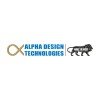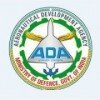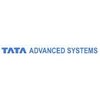
i
Zen Technologies
Filter interviews by
Zen Technologies Design Engineer Interview Questions and Answers
Zen Technologies Design Engineer Interview Experiences
1 interview found
I applied via LinkedIn and was interviewed in Oct 2024. There were 5 interview rounds.
An online aptitude by company
(1 Question)
- Q1. From our resume
(1 Question)
- Q1. About our projects did
(1 Question)
- Q1. Tool test with software
(2 Questions)
- Q1. Relocation acceptance
- Q2. Notice period in days
Design Engineer Jobs at Zen Technologies
Top trending discussions






Interview questions from similar companies

Senior Engineer Interview Questions & Answers
Nucon Aerospaceposted on 16 Feb 2024
I applied via Naukri.com and was interviewed before Feb 2023. There was 1 interview round.
(1 Question)
- Q1. Sourcing & Procurement process

Design Engineer Interview Questions & Answers
Alpha Design Technologiesposted on 15 Mar 2024
(1 Question)
- Q1. Basics, verilog, vhdl, design

Topic on sports that is ipl or pro kabaddi pros and cons
(2 Questions)
- Q1. Tell me about yourself?
- Q2. Questions on my leadership role in college days
Interview Preparation Tips

I applied via Walk-in and was interviewed before Jan 2022. There were 3 interview rounds.

(3 Questions)
- Q1. GD&T PURPOSE Questions
- Q2. Cmm OPERATOR Questions
- Q3. Cmm software purpose
- Ans.
CMM software is used to control and operate coordinate measuring machines.
CMM software is used to create measurement programs for coordinate measuring machines.
It allows for precise measurement of objects and parts.
CMM software can analyze data and generate reports.
Examples of CMM software include PC-DMIS, Calypso, and Metrolog.
(3 Questions)
- Q1. Previous working information
- Q2. Family introductions Question
- Q3. Salary purpose discussed
Interview Preparation Tips

Interview Questionnaire
1 Question
- Q1. Family background, strength ,weakness, capability, commitments ,and last yours salary expectation
Interview Preparation Tips
Experience: Give more concentration on apptitude and mechanical related question
Round: Group Discussion
Experience: In this round be bold to give give answer weather it's wrong or ryt ....be first to answer the questions because thy check who will come forward in group ...due t most of the people hesitate to answer in group

Junior Engineer Interview Questions & Answers
Aeronautical Development Agencyposted on 12 Jan 2024
(1 Question)
- Q1. Basic Electronics Questions

I applied via Company Website
(1 Question)
- Q1. Related to experience only technical mostly
(1 Question)
- Q1. Personal questions and future prespectives Avoid sharing personal things.
Interview Preparation Tips
Or 3 months of joining.
Company is good learning wise also good
Work culture friendly and supportive
Management as always superior.
HR policies are tricky.

I appeared for an interview in May 2023.

(2 Questions)
- Q1. Questions on GD&T and tolerance
- Q2. What is natural frequency of a System
- Ans.
Natural frequency of a system is the frequency at which a system tends to oscillate in the absence of any external force.
Natural frequency is determined by the system's mass, stiffness, and damping properties.
It is the frequency at which a system will oscillate if disturbed and then left to vibrate freely.
Examples include a swinging pendulum, a vibrating guitar string, or a car suspension system.
Natural frequency is an...
(2 Questions)
- Q1. Tell me about yourself
- Q2. Why are you looking for change
(2 Questions)
- Q1. What is the meaning of CTC
- Ans.
CTC stands for Cost to Company, which refers to the total salary package of an employee including all benefits and perks.
CTC includes salary, bonuses, incentives, allowances, and other benefits provided by the company.
It is the total amount spent by the company on an employee annually.
CTC helps in understanding the total cost incurred by the company for hiring and retaining an employee.
For example, if an employee's CTC...
- Q2. What are your future goals
Interview Preparation Tips

I appeared for an interview in Mar 2023.

(1 Question)
- Q1. About Self & pervious experience Salary negotiations
(1 Question)
- Q1. Basic technical subject questions
Zen Technologies Interview FAQs
Tell us how to improve this page.
Zen Technologies Interviews By Designations
- Zen Technologies Purchase Executive Interview Questions
- Zen Technologies RF Engineer Interview Questions
- Zen Technologies Procurement Manager Interview Questions
- Zen Technologies Software Engineer Interview Questions
- Zen Technologies HR Recruiter Interview Questions
- Zen Technologies Test Engineer Interview Questions
- Zen Technologies Design Engineer Interview Questions
- Zen Technologies Process Coordinator Interview Questions
- Show more
Interview Questions for Popular Designations
- Mechanical Engg. Design Interview Questions
- Senior Design Engineer Interview Questions
- Electrical Design Engineer Interview Questions
- Structural Design Engineer Interview Questions
- Piping Designer Interview Questions
- Auto CAD Designer Interview Questions
- Junior Design Engineer Interview Questions
- Hardware Design Engineer Interview Questions
- Show more
Zen Technologies Design Engineer Interview Process
based on 1 interview
Interview experience
Interview Questions from Similar Companies
Zen Technologies Design Engineer Reviews and Ratings
based on 2 reviews
Rating in categories
|
Software Engineer
24
salaries
| ₹3 L/yr - ₹10.2 L/yr |
|
Purchase Executive
14
salaries
| ₹1.8 L/yr - ₹3 L/yr |
|
Executive Accountant
11
salaries
| ₹2.4 L/yr - ₹3 L/yr |
|
System Administrator
10
salaries
| ₹3.2 L/yr - ₹5.6 L/yr |
|
Design Engineer
9
salaries
| ₹2.8 L/yr - ₹6 L/yr |

Aequs

Aeronautical Development Agency

Mahindra Defence Systems

Tata Sikorsky Aerospace
- Home >
- Interviews >
- Zen Technologies Interview Questions >
- Zen Technologies Design Engineer Interview Questions










